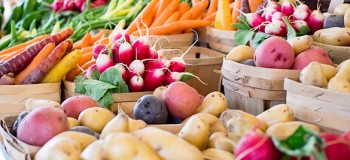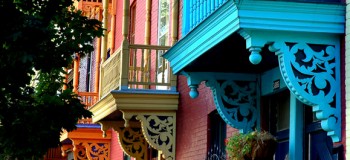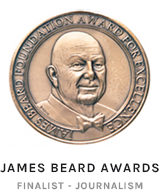Cookery Schools in South West England & How to Make Victoria Sponge Cakes
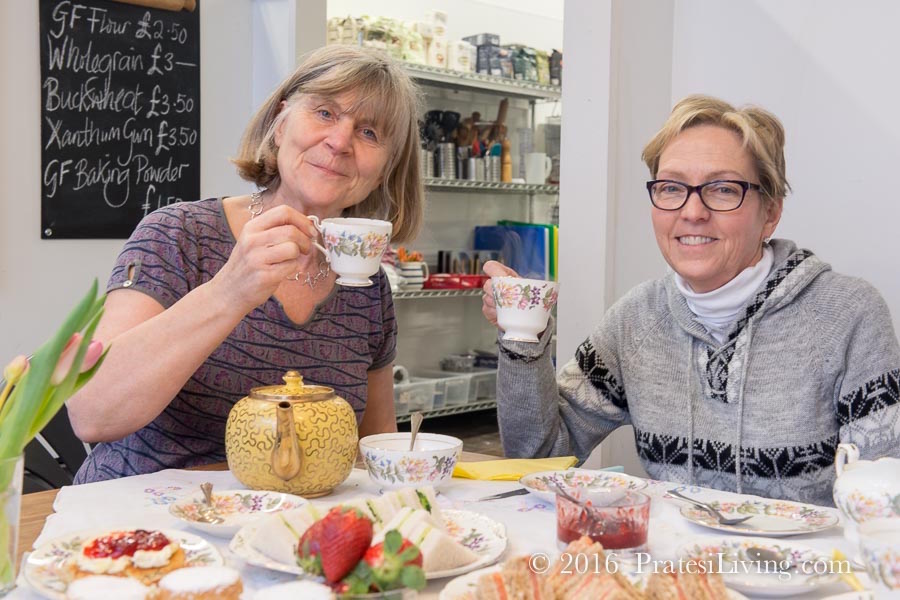
Join us as we explore The Cookery Schools of South West England.
When we travel, we like to embrace the traditional foods of the region, which in most parts of England means dining at pubs, drinking local ales, and trying all sorts of English meat pies and pasties and desserts, like sponge puddings and our personal favorite, Sticky Toffee Pudding. But, it’s also exciting to see what’s new and trending when you want to step out of the British cuisine box, especially when visiting the smaller cities and villages outside of London. We were both surprised and impressed to find quite an exciting culinary scene with a lot of international flavors, influence, and sophistication in South West England.
Cookery schools, in particular, seem to be quite the thing in this part of the country. The historic city of Bath, located just 2 ½ hours west of London by car, with a population of under 85,000 in the city, is home to six cookery schools in the city and surrounding area. Ranging in courses from decorative cake baking, to preparing vegetarian recipes with an award-winning chef and former restaurant owner, to Persian cuisine, French bread baking with a French chef and cookbook author, and working in the kitchen at a Michelin-starred restaurant in a 5-star luxury country manor house, the choices are quite varied. Less than an hour from Bath in the small market town of Devizes in Wiltshire, there’s Vaughan’s Kitchen Cookery School. Owned by a popular local chef, Vaughan’s offers several course options, including bespoke classes where you can learn to make Afternoon Tea fit for the Queen!
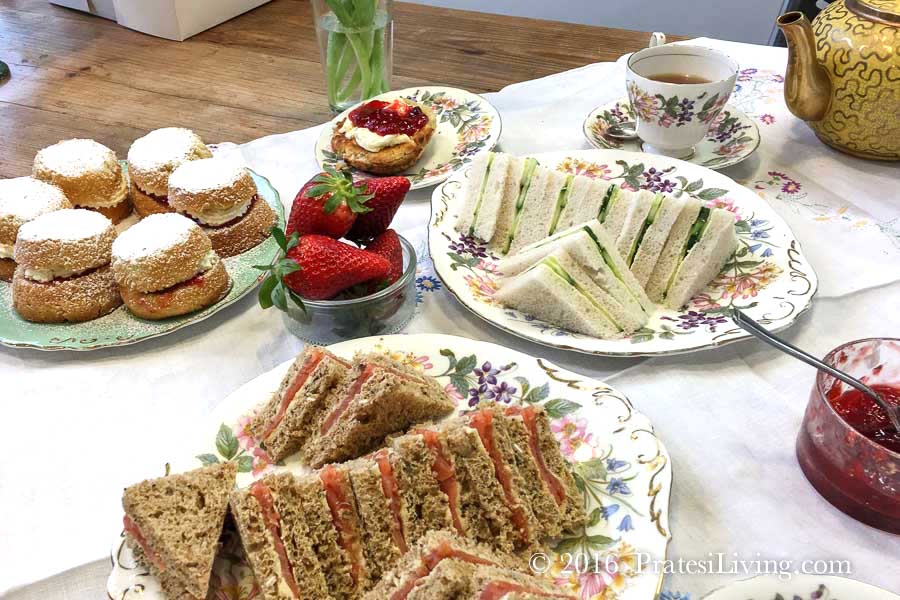
Afternoon Tea fit for the Queen
During our time in South West England, we were able to experience three of these cookery schools, each with a unique class offering. If you’re planning a trip to this part of England, taking a cookery class is a great way to spend an afternoon or evening enjoying the company and conversation with locals while honing your kitchen and baking skills. It’s also a unique memento for revisiting your trip once home when you can prepare a traditional English specialty or an internationally inspired dish you learned to prepare while in the U.K.
Two teaching videos from our classes are included below.
Demuths Cookery School
Centrally located in the UNESCO World Heritage Centre of Bath, Demuths is an innovative and creative vegetarian cookery school run by Rachel Demuth. An award-winning restaurateur and chef, she was the owner of Demuths Restaurant in Bath for 26 years. Known as one of the leading vegetarian chefs in the U.K., she is also author of the Green Seasons Cookbook.
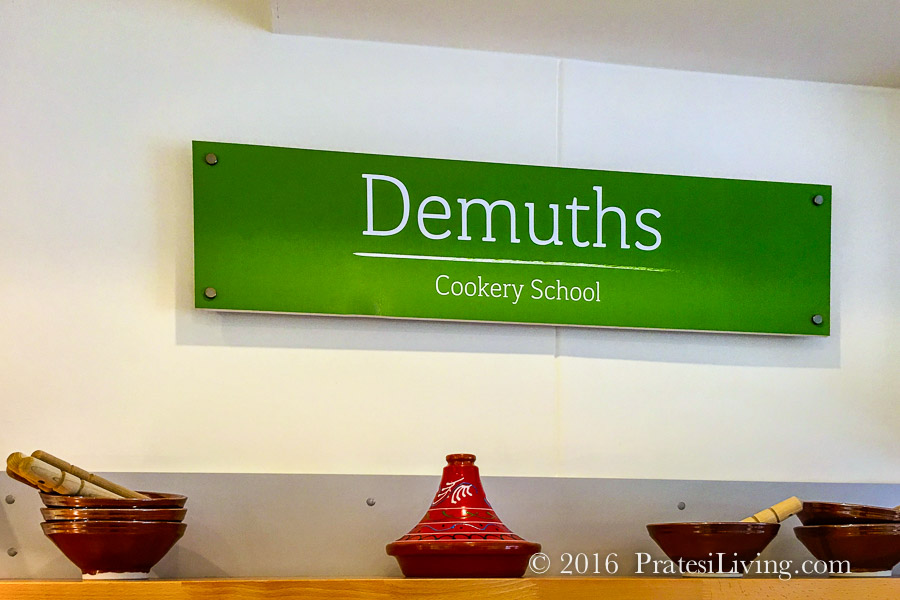
Demuths Cookery School
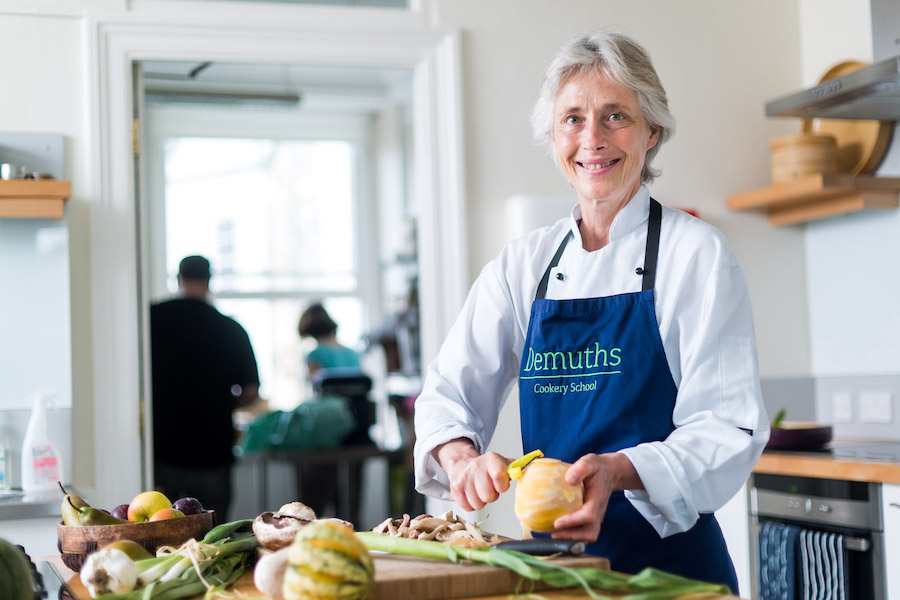
Rachel Demuth (Photo credit – Demuths Cookery School)
The school offers many types of classes and short courses in their bright and spacious upstairs kitchen, in addition to cookery holidays throughout the year. They also host private classes, such as the one we were fortunate to attend with Rachel herself. A talented chef and business owner, and a skilled instructor, it was such a pleasure to spend an afternoon in her kitchen.
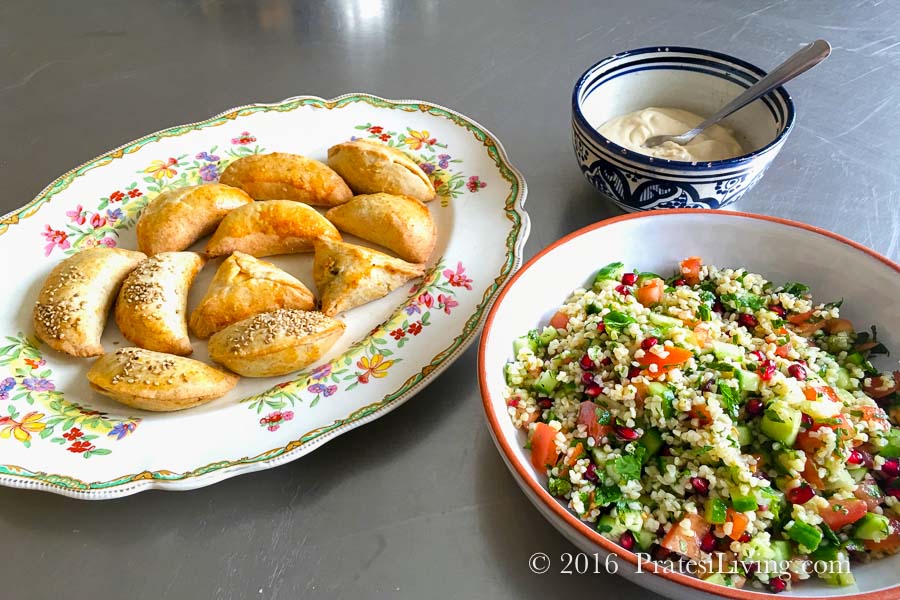
Our amazing lunch at Demuths
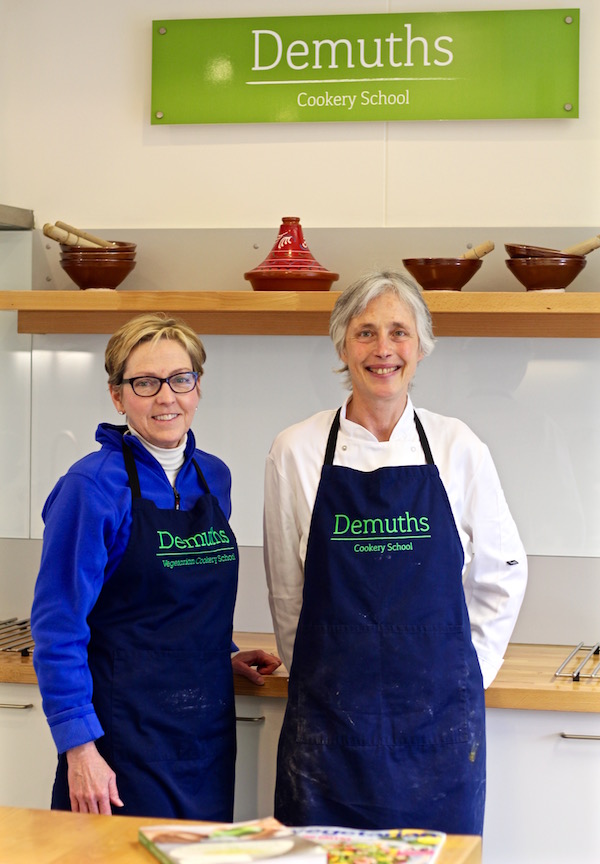
With Rachel at Demuths (Photo credit – Demuths)
We love the idea of eating more vegetarian dishes and incorporating them into our not so vegetarian diet, but sometimes find it a challenge to prepare meals that are genuinely satisfying when they don’t include a meat, poultry, or fish protein. Working with Rachel for an afternoon and making what was an easy lunch to prepare was inspiring. It was also very fresh, seasonal, healthy, colorful, and flavorful. Most importantly, we weren’t the least bit hungry later that day! Knowing the appropriate mix of proteins and other ingredients is important when eating vegetarian meals and that’s the benefit of working with a chef who’s an expert in the field.
Our lunch menu included the following dishes:
- Wild Garlic Soup
- Turkish Fatayer
- Tahini Dip
- Tabouleh
- Roasted Rhubarb & Orange Layered Fool for dessert
The Wild Garlic Soup was lovely and so simple to prepare with the beautiful fresh garlic (Similar to what we know of as ramps in the U.S., ramps are a mild form of wild garlic.) and fresh lemon juice to brighten the flavors. The Turkish Fatayer (small savory pastries) were especially light and flaky made with dough that incorporated yogurt. They were filled with a mixture of butternut squash, olive oil, feta cheese, Aleppo pepper, and other seasonings. The Middle Eastern inspired Tabouleh was refreshing and had the perfect blend of fresh ingredients, textures, and seasonings. Served along with the Tahini for dipping the pastries or topping the Tabouleh, lunch was delicious.
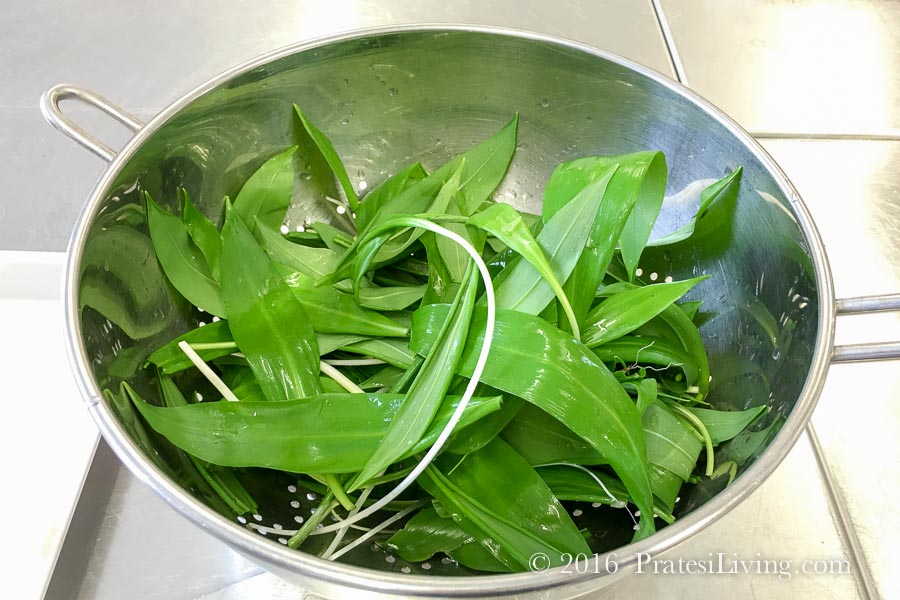
Beautiful wild garlic
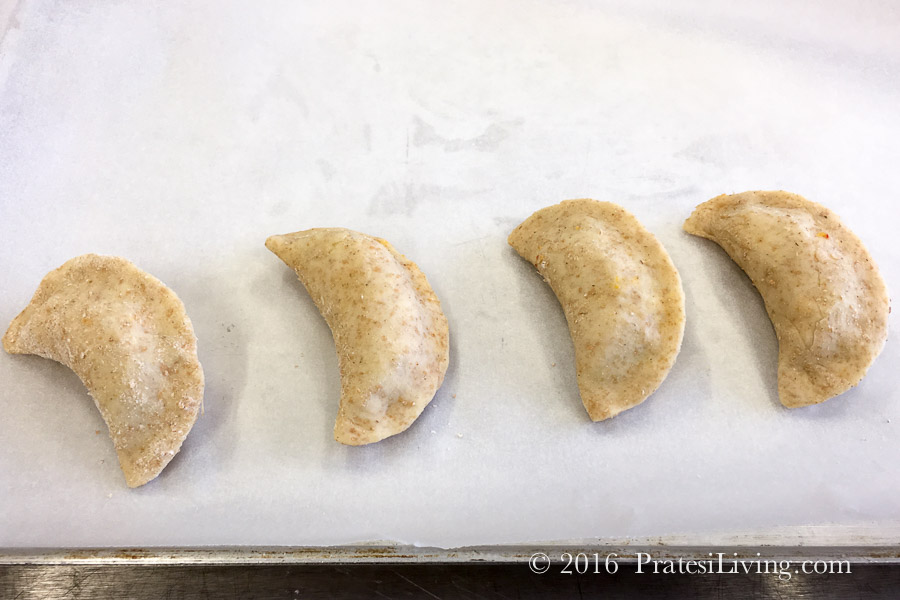
Turkish Fatayer
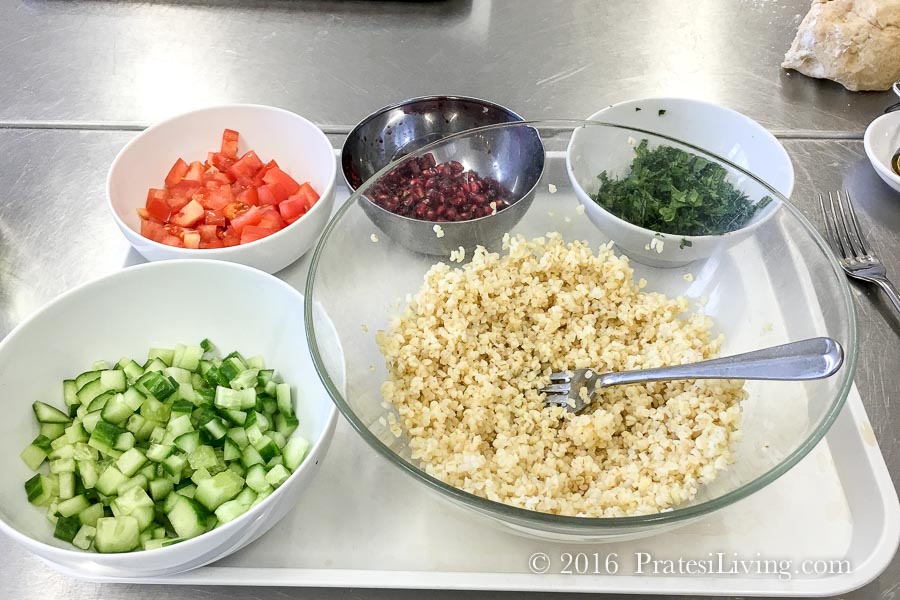
Ingredients for Tabouleh
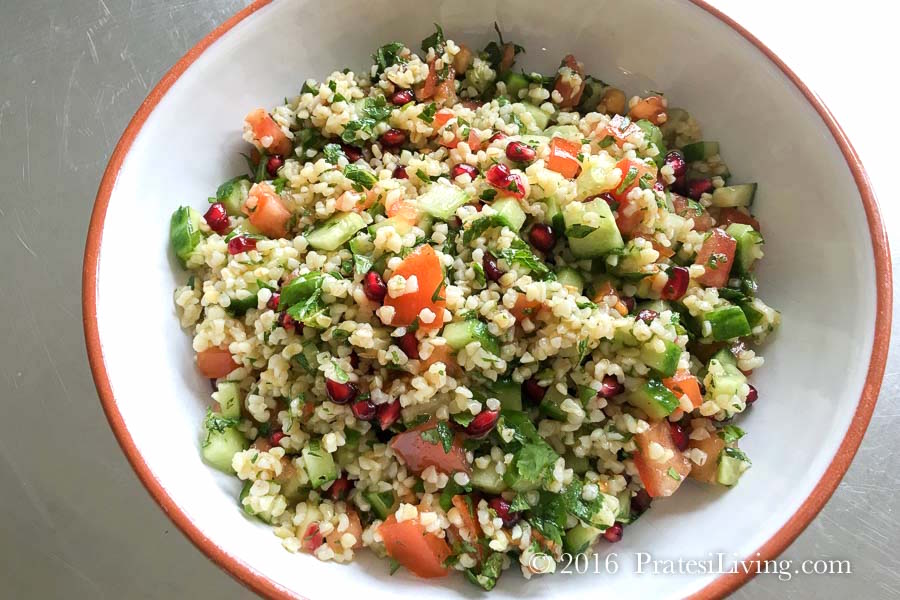
Fresh, healthy, and delicious
Of course, we can’t forget dessert and this one was special. Roasting the rhubarb with orange segments with their juice, and crystallized ginger, was a brilliant way to bring out the intense citrus flavor in the oranges and sweeten the rhubarb without a lot of added sugar. Layered with a combination of Greek yogurt, mascarpone, and orange flower water (the secret to a really unique flavor in this recipe), the dessert was the perfect ending to a healthy lunch. I loved the combination of roasted fruit with just enough sweetness and a bit of tanginess from the yogurt to round out the flavors.
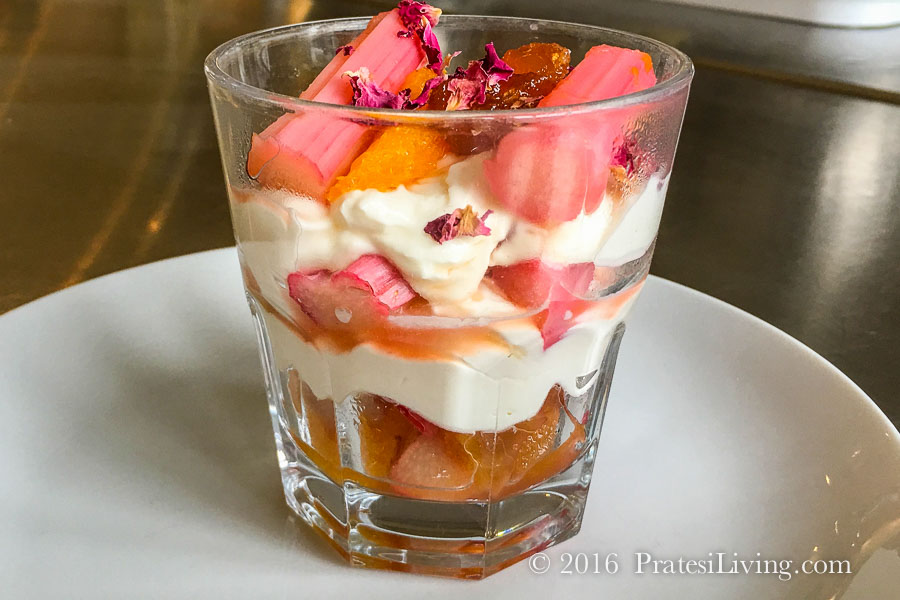
Roasted Rhubarb and Orange Layered Fool
The Bertinet Kitchen Cookery School
Located very close to Demuth’s Cookery School, Bertinet’s is owned by French chef and baker, Richard Bertinet. The school has been featured on PBS in Gourmet’s Adventures with Ruth – A Tour of Cookery Schools Around the World. In addition, The Bertinet Kitchen won the South West Tourism Award for Best Tourism Experience in 2009.
Opened in 2005, the school offers a wide range of cookery classes and short courses that of course, include French bread making, along with other themed classes. Bertinet is also the owner of two locations of the Bertinet Bakery in Bath where you can purchase his famous breads, viennoiserie, patisserie, and savouries. In addition, he is the author of five cookbooks covering the topics of cooking, baking, and the art of pastry and patisserie making.
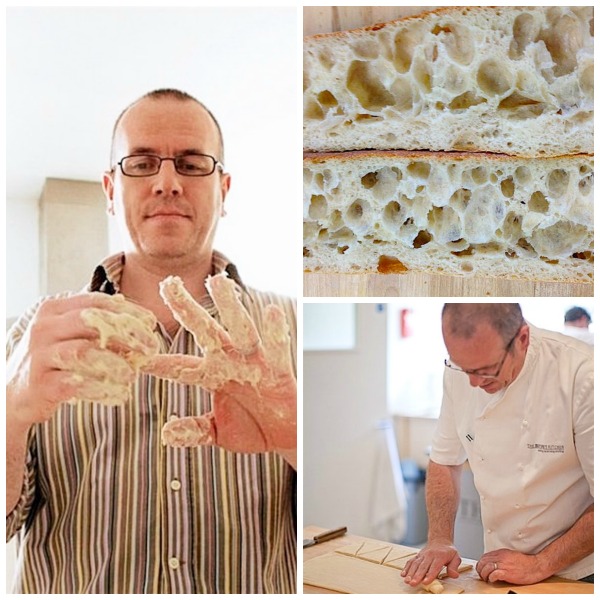
Richard Bertinet (Photo credit – The Bertinet Kitchen)
Having worked with a Master French Baker, Lionet Vatinet of La Farm Bakery in Cary, North Carolina, I was very interested to once again see the special technique of turning very wet dough into spectacular light and crusty French bread. You can’t add additional flour while working this type of dough because it will ruin the delicate balance of the gluten and create a dense bread. Rather, you must work it with your hands until it is pliable and no longer sticky and then mold it into those spectacular French breads that can only be achieved with this type of dough and hand method of mixing and shaping.
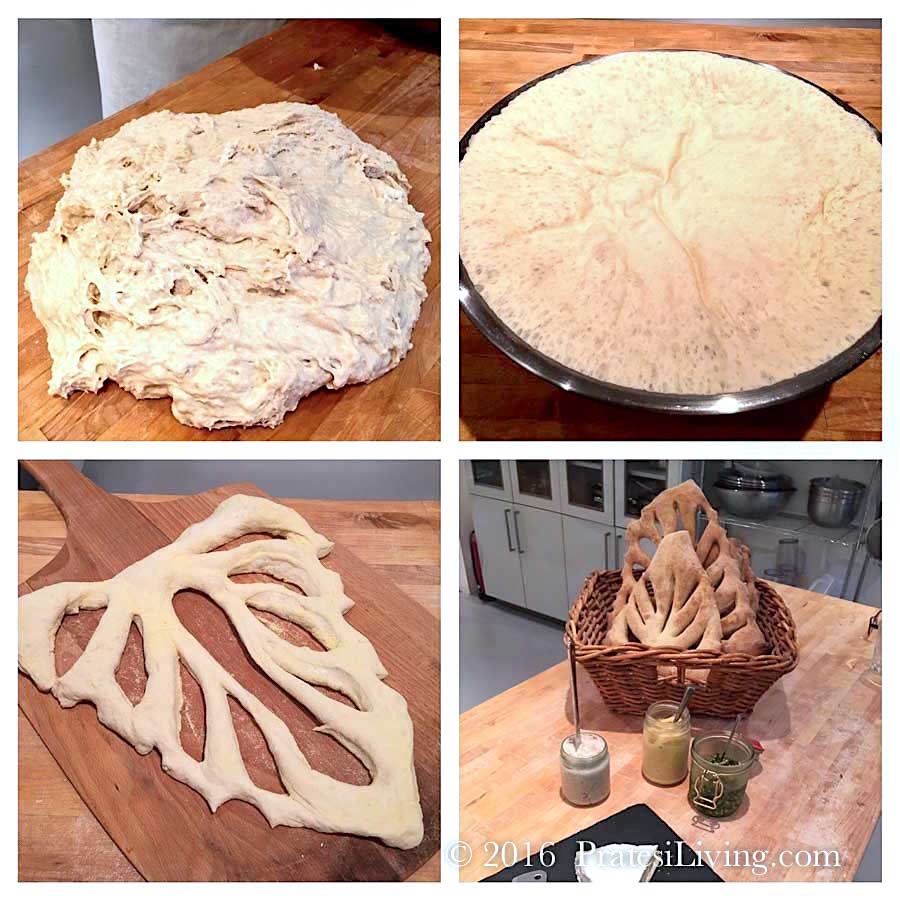
Stages of bread making
Our teacher for the afternoon was Fionn Young. A skilled baker, I watched intently as she masterfully worked and rounded out the dough from its very wet stage to a perfect ball that was ready to rest and then be shaped into Fougasse. Typically a loaf of bread that is found in the region of Provence, the dough can also be made into this artfully crafted bread that resembles an ear of wheat.
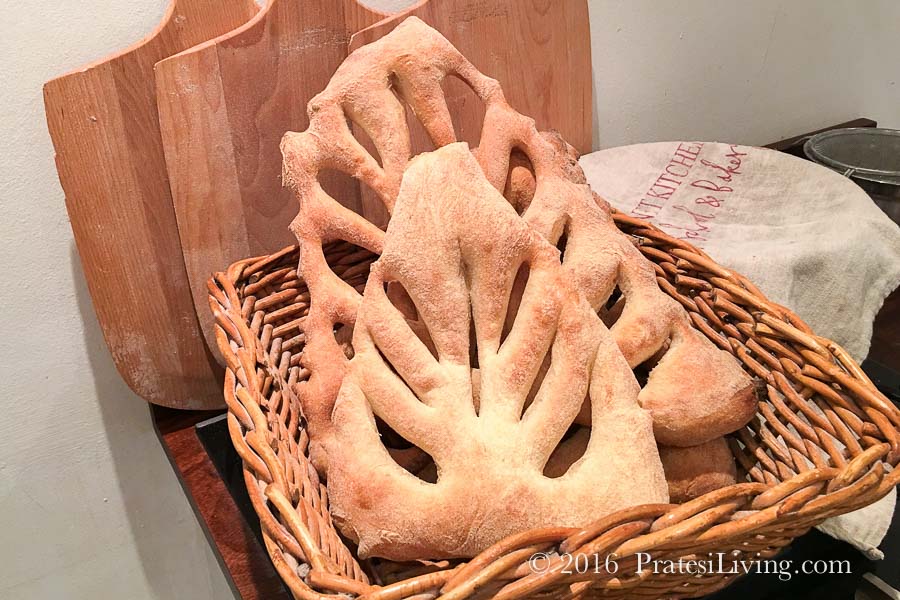
Fougasse
Watch this video of Fionn as she demonstrates the French bread baking method:
We also prepared Pecorino and Olive Breadsticks that were made with olive oil dough. Once again, seeing firsthand the method used to mold and shape the dough was very helpful. Watching and then doing and having someone guide you along the way is the best way to learn this technique when preparing a wet dough for French breads and also for shaping different types of breads. Of course, the best part of the afternoon might have been the crusty, fresh and warm-from-the-oven snacks we enjoyed following our class and then took back to the hotel, still warm in the bag.
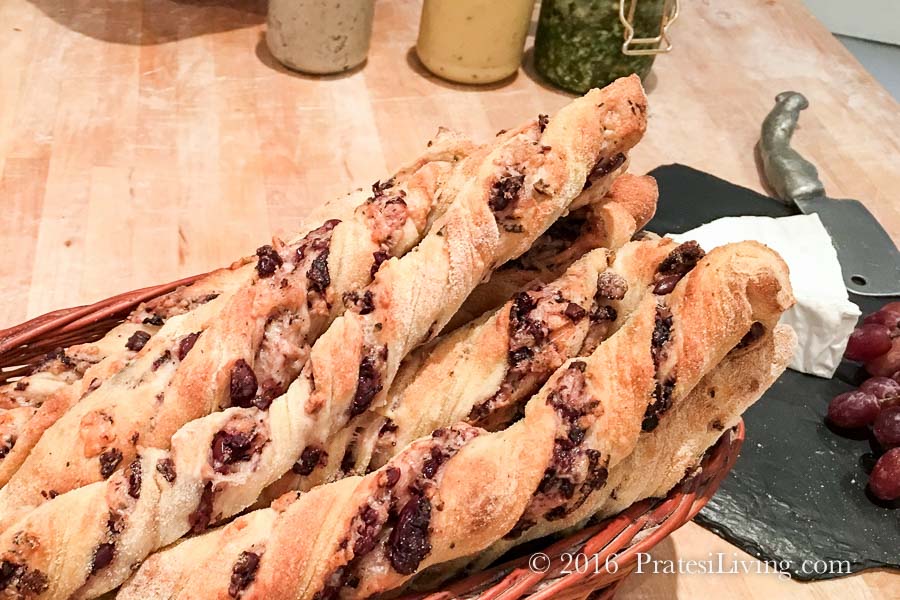
Pecorino and Olive Breadsticks
Vaughan’s Kitchen Cookery School
Peter Vaughan, an accomplished chef, restaurateur, and cookbook author, founded Vaughan’s Kitchen Cookery School over a decade ago in the small town of Devizes in Wilshire. Vaughan’s offers a wide variety of cookery classes, corporate classes, professional courses, and international classes, featuring cuisines such as Lebanese, Spanish, Sicilian, and Thai. Peter’s cooking focus is on “naturally balanced cooking,” and they offer courses covering that topic as well.
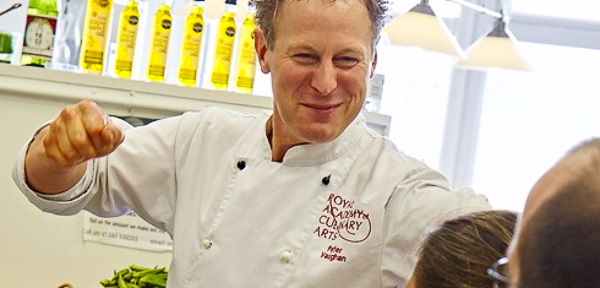
Peter Vaughan (Photo credit – Vaughan’s Cookery School)
Perhaps one of their most entertaining classes is from their selection of bespoke courses. These are reserved for small special events like birthday celebrations, hen parties, an evening with friends, or say…a visit to Devizes to prepare Afternoon Tea with Judy Dain that’s fit for the Queen!
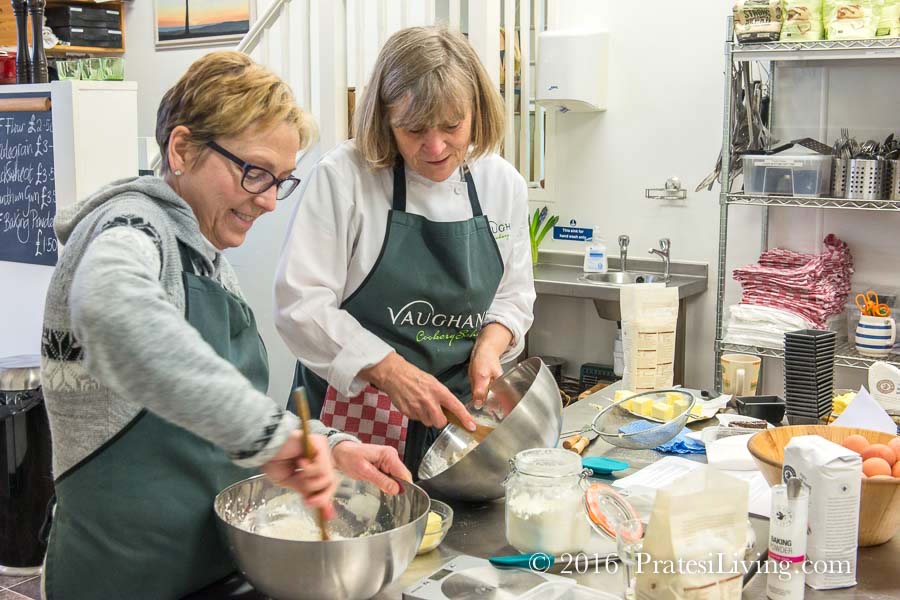
With Judy in the kitchen at Vaughan’s
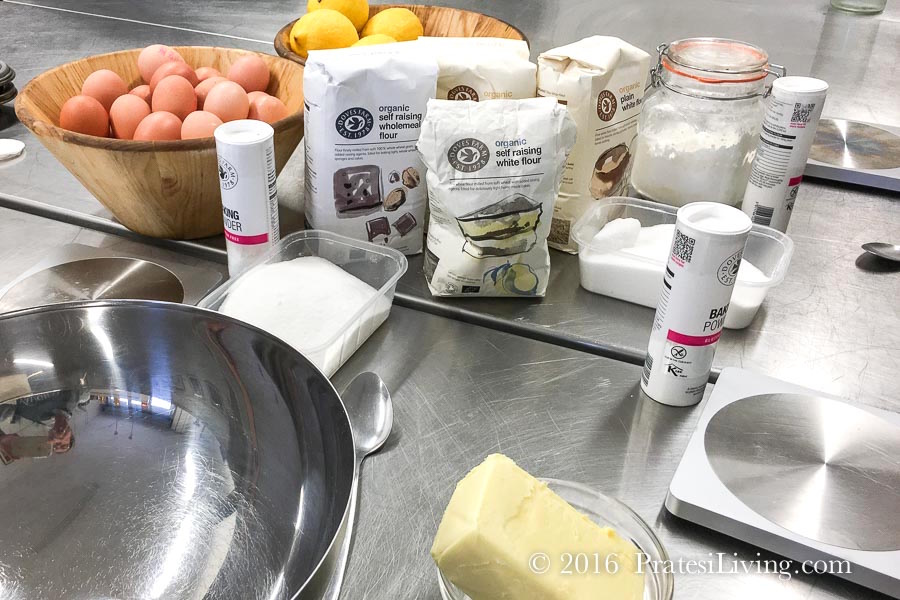
Baking ingredients
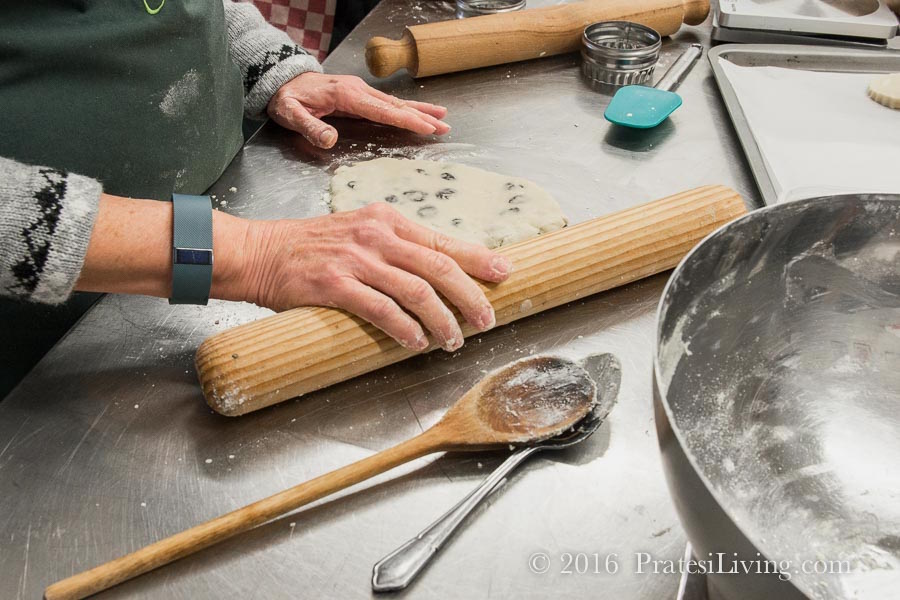
Rolling the dough for scones
Judy, the Cookery School Director at Vaughan’s, was quite knowledgeable about the the origin of Afternoon Tea and history behind the quintessential English tradition and it was a delight to listen to and work with her while we were in the kitchen. As we learned, Afternoon Tea began in the 19th century during Queen Victoria’s reign and it was her friend, Anna Russell, the Duchess of Bedford, who initiated the idea of an afternoon snack of biscuits, bread and butter, and cakes and jam served with Darjeeling tea.
Queen Victoria’s most beloved teatime favorite were the the light sponge cakes served with raspberry jam, so they were eventually called Victoria Sponge. Also known as a Victoria Sandwich, we prepared the cakes from scratch during our time at the cookery school. These delicate, sweet, and wonderful little cakes traditionally layered with raspberry jam can also be filled with a luscious buttercream or whipped cream along with the jam, if desired. The sandwiches are then finished with a dusting of powdered sugar. Other Afternoon Tea specialties we prepared and enjoyed included scones, Brandy Snaps, shortbread, Lemon Drizzle Cake, Chocolate Crunch, and traditional tea sandwiches.
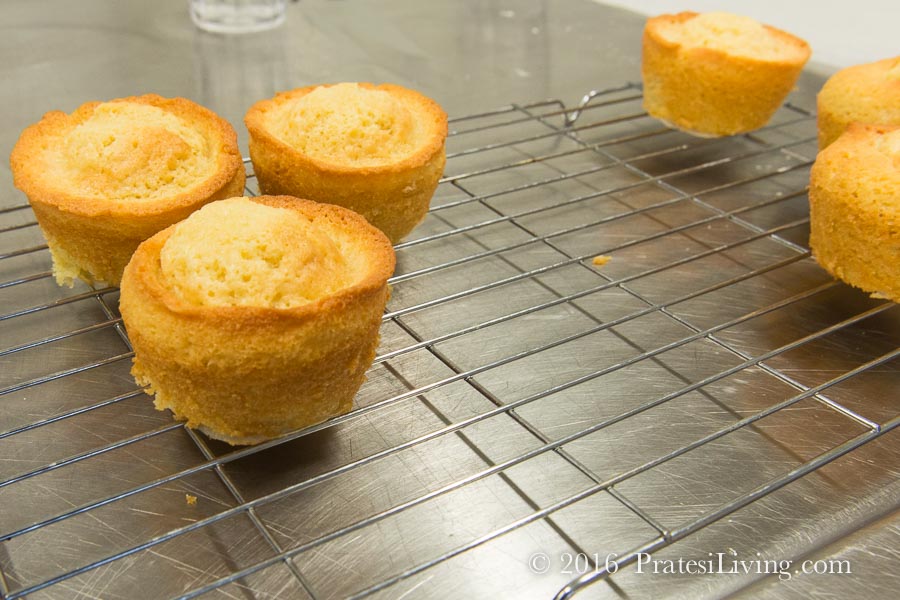
Victoria Sponges fresh from the oven
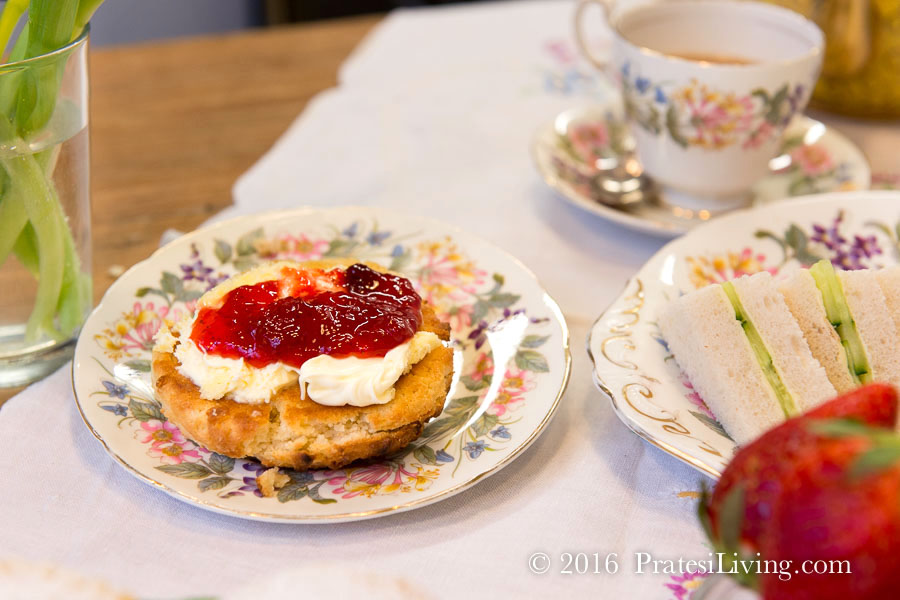
Scones with clotted cream and jam
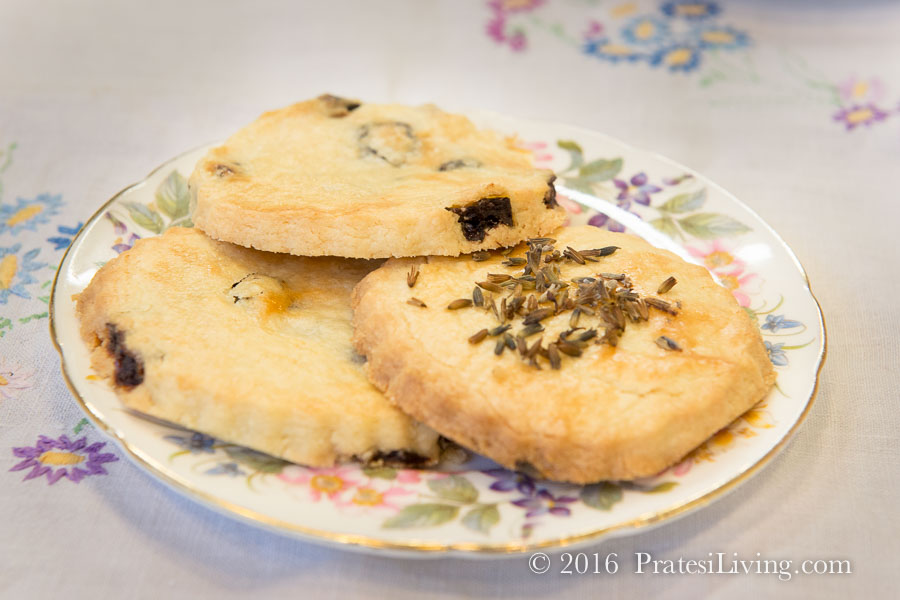
Shortbread
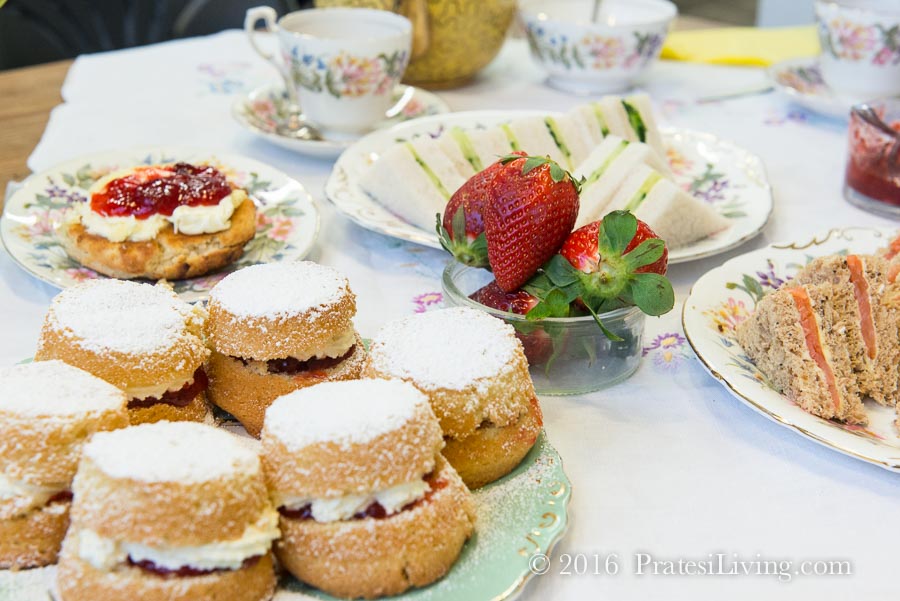
Afternoon Tea
It was a fun and entertaining afternoon and such a pleasure to work with and share Afternoon Tea with Judy. She was also kind enough to share the recipe for Victoria Sponge Cakes with our readers, which you’ll find below.
Following is a video we created of Judy instructing us on how to make traditional Victoria Sponge:
If your upcoming travel plans include a trip through South West England, we hope you’ll attend one or all of these cooking schools during your travels.
Here is the overview of our time spent in South West England and the first in a series of articles about our trip:

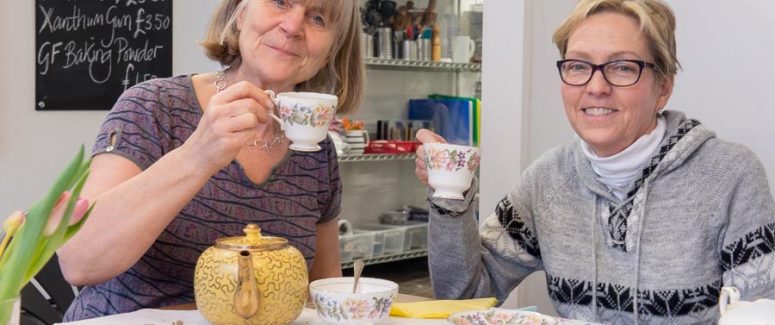
Victoria Sponge Cakes
Judy says, “To be absolutely correct, the traditional name is in fact a Victoria Sandwich and the traditional filling is raspberry jam only – no cream. However, since Queen Victoria’s time it has gotten ‘jazzed up’ by adding a light buttercream or just plain whipped double cream. If you want a recipe for buttercream it is just half the amount of soft, room temperature butter to sieved icing sugar. It works best if you whip the butter until light and fluffy and then gradually whip in the sieved icing sugar. If it needs to be made ‘softer’ you can add 1-2 tablespoons milk and the addition of a few drops of vanilla extract.”
Ingredients:
- Equal amounts of eggs, caster sugar (or super-fine sugar), butter, and self-rising flour
- Vanilla extract, to taste
- Whole milk, to thin batter, if necessary
- Raspberry jam or other favorite jam (the Queen prefers strawberry jam)
- Buttercream or whipped cream, if desired (as mentioned in note above)
Note –
To make 4 small cakes in muffin tins use 1 egg
To make a large cake to fill 2 x 8-inch baking tins use 3 eggs
To make a BIG birthday cake use 6 eggs!
Directions:
- Weigh eggs and set to one side.
- Weigh same amount of caster sugar and butter and then cream together until light and fluffy.
- Beat in eggs gradually with about 1 tablespoon of self-rising flour with each egg to prevent mixture from curdling. 1/2 teaspoon of vanilla extract can be added at this point for additional flavor.
- Gradually fold in sifted flour that is left with metal spoon, taking care not to knock out the air you have put in with beating. If mixture is very stiff, add 1-2 tablespoons milk, as necessary.
- Divide mixture into appropriate-sized greased and lined muffin tins or baking pans. The mixture should come halfway up the sides of the tin or pans.
- Bake for about 20-25 minutes in preheated oven at 190 degrees C/170 degrees F. To test for readiness, press sponge in middle lightly and it should bounce back.
- Take pans out of the oven, carefully removes the sponges and put on cooling rack. Fill with favorite jam and if desired, buttercream or whipped cream and stick together.
- Dust with icing sugar to serve.
Recipe is reprinted with permission from Vaughan’s Cookery School – Devizes, Wiltshire, England
This content is protected under International Copyright Laws. Pratesi Living provides this content to its readers for their personal use. No part (text or images) may be copied or reproduced, in whole or in part, without the express written permission of PratesiLiving.com. All rights reserved.
Disclosure – We worked with Visit Britain on this trip to South West England. As always, the opinions expressed are our own.

